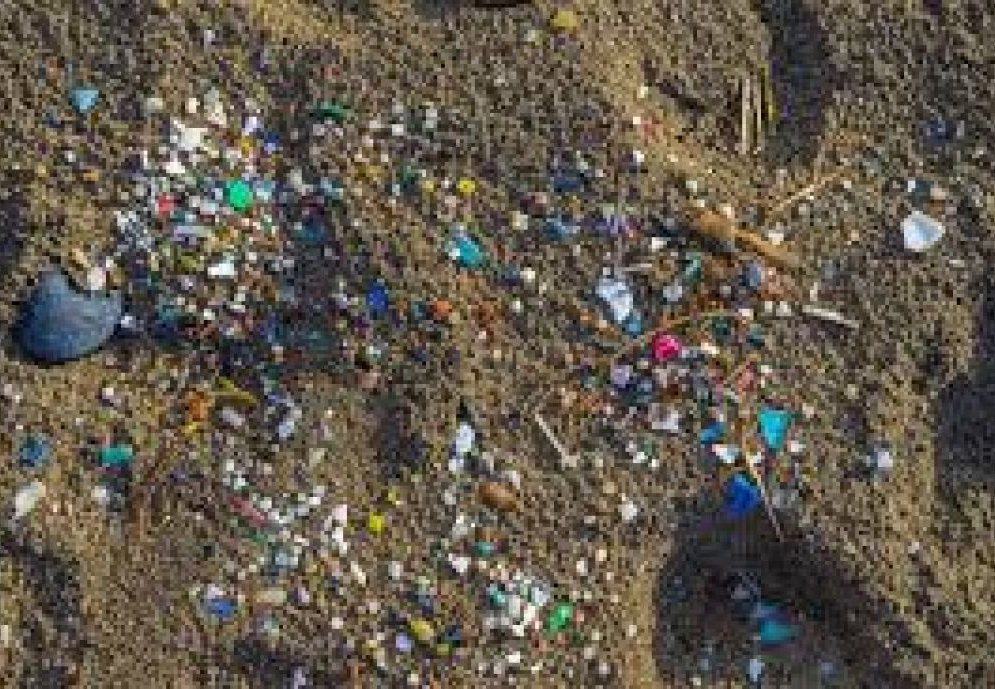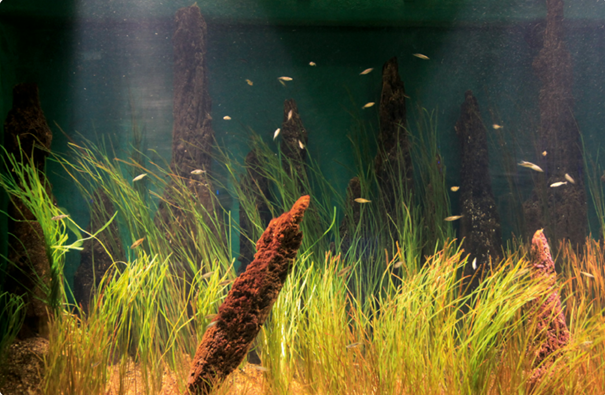

Plastic in school (lower level)
Project summary
Exploring plastic particles and the Baltic Sea ecosystem.
Learning outcome
The pupils…
- know the function and characteristics of seagrass meadows
- can describe the food webs within the seagrass meadow ecosystem
- understand the impact of microplastics on seagrass meadows and the Baltic Sea
Time required
4-6 teaching units
Tools or equipment
- Optional: Map of the Baltic Sea
- Moderation cards
- Internet access and projector for presenting a video
- Transparent film or transparent bag with small pieces of coloured plastic (e.g. cut up plastic bags)
Activity description
Unit 1:
What do you know about the Baltic Sea? Write a key point on a coloured moderation card. Pin your cards to the board.
Discuss the results with the class. Are there any cards with similar information on them? Is there any information that you don't understand? Organise the cards into a mind map.
In the shallow waters of the Baltic Sea you can find seagrass meadows. Describe the seagrass meadow in the photo. Use the following terms:
Sandy bottom, seagrass, upright, fish, water current, coast, Baltic Sea
Seagrass meadows are special places. Watch the video explaining seagrass meadows. Then complete the 'Cloze text' in the worksheet at the bottom of this page.
Read the text about the inhabitants of the seagrass meadow. Write the names of the animals in the gaps in the illustration.
(Worksheet ‘Who eats whom?’ - see below for link)
Homework:
Draw one of the following inhabitants of the seagrass meadow on a sheet of paper: algae, shrimp, three-spined stickleback, pike.
Unit 2:
Remember the last lesson. Who lives in the seaweed meadow? Who eats whom? Use the drawings you made at home to create a food chain on the board.
[Teacher swaps the picture of the algae for a transparent film with small plastic particles in it.]
Discuss in class: What happens if the shrimp eats small plastic particles instead of algae?
[Teacher puts a drawing of a fisherman on the board.]
Discuss in class: Which animals does the fisherman catch? Does the plastic in the animals have consequences for him?
Write down the results of the discussion. Answer the following question in your own words: What does plastic in the food chain mean for Baltic Sea animals?
Now work with a partner. Think about how plastic can end up in the Baltic Sea. Name 4 possibilities.
How could you help to ensure that less plastic ends up in the Baltic Sea? Formulate tips for your classmates.
Collect all the tips from the class on a poster and hang it up in the classroom.
Tips how to implement the topic to school curriculum
More options:
In addition, an experiment can be carried out in which a piece of coloured plastic is placed in glasses of water with different salt contents. These are left in the classroom for a predetermined period of time. The pupils write down their expectations at the beginning and their observations at the end of the period. The problem of the slow decomposition of plastic can be worked out here.
Appendix
Cloze solution:
- sea
- sunlight
- habitat
- predators
- species
- plants
- deeper
- food source
- reduce
- sediment
- hills
- flooding
- beach
- dunes
Picture of the seagras meadow
Worksheet: fill in the missing words
Explanatory videos (choose one):

